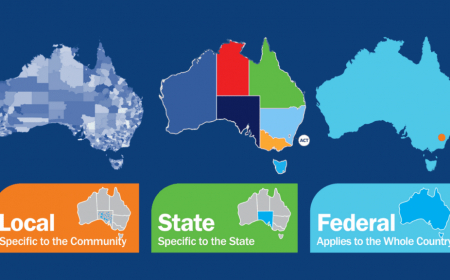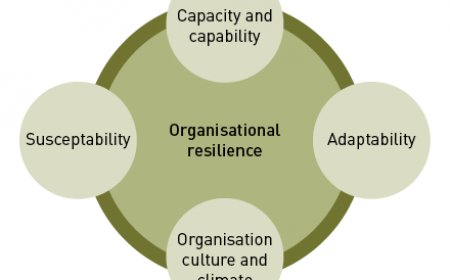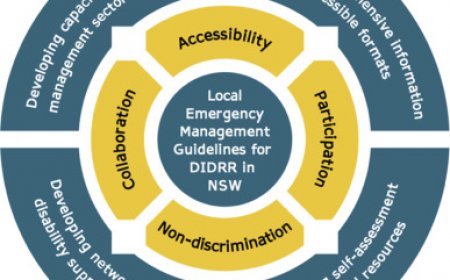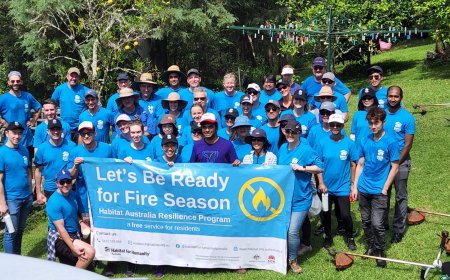Travel & Tourism: Sustainable Tourism Practices Gaining Traction
Discover how sustainable tourism practices are transforming the travel industry. Learn about eco-friendly accommodations, carbon-neutral travel options, and regenerative tourism initiatives designed to protect our planet and empower local communities.
Sustainable tourism has emerged as a critical paradigm in the global travel and tourism industry. As the world becomes increasingly aware of environmental degradation, cultural erosion, and economic inequality, travelers and businesses alike are shifting toward practices that prioritize long-term sustainability . This movement seeks to balance the needs of tourists, host communities, and ecosystems, ensuring that future generations can enjoy the same wonders we cherish today.
The concept of sustainable tourism encompasses three core pillars: environmental stewardship , cultural preservation , and economic equity . These principles guide the development of policies, business models, and traveler behaviors aimed at minimizing negative impacts while maximizing positive contributions. In this article, we explore the evolution of sustainable tourism, its current state, and how it is reshaping the travel landscape.
The Evolution of Sustainable Tourism
The roots of sustainable tourism trace back to the late 20th century when concerns about environmental conservation began gaining traction. Early efforts focused on preserving natural habitats and wildlife, particularly in ecologically sensitive areas like rainforests and marine reserves. Over time, the scope expanded to include cultural heritage, community empowerment, and economic fairness. Today, sustainable tourism is not just a niche market but a mainstream expectation, driven by heightened awareness of climate change, biodiversity loss, and social justice issues.
Key milestones in the evolution of sustainable tourism include the establishment of international frameworks such as the United Nations World Tourism Organization (UNWTO) guidelines and the adoption of the Global Sustainable Tourism Council (GSTC) Criteria . These frameworks provide standardized benchmarks for destinations, businesses, and travelers striving to align with sustainability goals.
Why Sustainable Tourism Matters
Environmental Impact of Traditional Tourism
Traditional tourism often comes with a heavy environmental cost. From excessive carbon emissions caused by air travel to deforestation for resort construction, the ecological footprint of tourism is staggering. Popular destinations like Venice, Bali, and Machu Picchu have faced significant challenges due to overtourism, including pollution , habitat destruction , and water scarcity . The need for sustainable alternatives has never been more urgent.
Air Travel and Carbon Emissions
Air travel remains one of the largest contributors to greenhouse gas emissions within the tourism sector. According to studies, aviation accounts for approximately 2-3% of global CO2 emissions , a figure expected to rise as international travel becomes more accessible. To combat this, airlines are investing in fuel-efficient aircraft, exploring alternative fuels, and offering carbon offset programs. However, critics argue that these measures alone are insufficient without systemic changes in travel behavior.
Marine and Coastal Degradation
Coastal regions, which attract millions of tourists annually, face unique threats from unsustainable practices. Coral reefs, mangroves, and seagrass beds are particularly vulnerable to damage caused by irresponsible snorkeling, diving, and boating activities. Additionally, untreated sewage and plastic waste from tourist facilities contribute to water pollution, harming marine life and disrupting ecosystems.
Deforestation and Land Use
In many developing countries, pristine forests are cleared to make way for resorts, golf courses, and other infrastructure catering to tourists. This deforestation not only destroys habitats but also exacerbates climate change by releasing stored carbon into the atmosphere. Sustainable tourism advocates emphasize the importance of preserving natural landscapes and promoting low-impact accommodations.
Cultural Preservation in a Globalized World
Tourism can both enrich and erode local cultures. While it provides opportunities for cultural exchange, unchecked tourism often leads to the commodification of traditions, loss of authenticity, and displacement of indigenous communities. Sustainable tourism practices emphasize respectful engagement with local customs, promoting mutual understanding and safeguarding intangible heritage.
Authentic Cultural Experiences
One of the hallmarks of sustainable tourism is the promotion of authentic cultural experiences. Instead of staged performances or mass-produced souvenirs, travelers are encouraged to engage directly with local artisans, musicians, and storytellers. For example, homestay programs allow visitors to live with host families, gaining firsthand insight into daily life and traditions.
Protecting Indigenous Rights
Indigenous communities often bear the brunt of tourism-related disruptions, losing access to ancestral lands and sacred sites. Sustainable tourism initiatives aim to rectify this imbalance by involving indigenous groups in decision-making processes and ensuring they receive fair compensation for their contributions. Examples include Maori-led tours in New Zealand and Aboriginal-guided treks in Australia.
Avoiding Cultural Appropriation
A growing concern in the tourism industry is the risk of cultural appropriation, where elements of a culture are adopted superficially or exploited for profit. Sustainable tourism promotes ethical guidelines for interacting with host communities, discouraging exploitative practices and fostering genuine appreciation.
Economic Benefits for Local Communities
A key goal of sustainable tourism is to ensure that tourism revenue benefits local economies rather than being siphoned off by multinational corporations. By prioritizing community-based tourism initiatives , travelers can support small businesses, artisans, and farmers, fostering economic resilience and reducing poverty.
Community Empowerment
When tourism dollars flow directly into local hands, they create jobs, fund education, and improve infrastructure. Community-owned lodges, cooperatives, and tour operators empower residents to take control of their destinies while preserving their cultural identity. For instance, in Kenya’s Maasai Mara region, community conservancies generate income through eco-tourism while protecting wildlife habitats.
Fair Trade and Ethical Shopping
Travelers can contribute to sustainable tourism by purchasing goods and services produced locally under fair trade conditions. Handicrafts, textiles, and organic foods sold by cooperatives ensure that artisans receive fair wages and working conditions. Supporting these enterprises helps reduce reliance on imported products and strengthens local economies.
Capacity Building
Training programs for hospitality workers, guides, and entrepreneurs enhance the skills and employability of local populations. By investing in human capital, sustainable tourism creates long-term benefits that extend beyond individual trips.
Key Trends in Sustainable Tourism
Eco-Friendly Accommodations
Hotels and resorts are increasingly adopting green certifications and implementing eco-friendly measures such as energy-efficient lighting, water conservation systems, and waste reduction programs. Many properties now offer guests the option to participate in sustainability efforts, such as reusing towels or planting trees during their stay.
Green Certifications
Certifications like LEED (Leadership in Energy and Environmental Design) , Green Key , and EarthCheck provide third-party validation of a property’s commitment to sustainability. These labels assure travelers that their accommodation adheres to rigorous environmental standards.
Renewable Energy Integration
Solar panels, wind turbines, and geothermal systems are becoming common features in eco-lodges and boutique hotels. By harnessing renewable energy sources, these establishments significantly reduce their reliance on fossil fuels.
Water Conservation Techniques
In water-scarce regions, hotels implement innovative solutions such as rainwater harvesting, greywater recycling, and low-flow fixtures. Guests are educated on the importance of conserving water through signage and interactive displays.
Carbon-Neutral Travel Options
The aviation industry is exploring ways to reduce its carbon footprint through innovations like biofuels, electric planes, and carbon offset programs. Meanwhile, train travel and cycling tours are gaining popularity as low-impact alternatives for exploring destinations.
Biofuels and Electric Planes
Research into sustainable aviation fuels (SAFs) made from plant-based materials shows promise for reducing emissions. Similarly, prototypes of electric airplanes capable of short-haul flights are being tested, offering hope for cleaner skies in the future.
Train Travel Renaissance
Trains are experiencing a resurgence as an eco-friendly mode of transportation. High-speed rail networks connect major cities across Europe and Asia, providing fast, comfortable, and scenic journeys. Rail travel emits far fewer greenhouse gases per passenger mile compared to flying or driving.
Active Travel Adventures
Cycling tours, hiking expeditions, and kayaking adventures appeal to environmentally conscious travelers seeking immersive experiences. These activities minimize resource consumption while promoting physical fitness and mental well-being.
Regenerative Tourism
Beyond sustainability, regenerative tourism aims to leave destinations better than they were found. Initiatives include coral reef restoration projects, reforestation campaigns, and community-led conservation efforts. These approaches not only mitigate harm but actively contribute to the regeneration of natural and social systems.
Restoration Projects
Volunteer programs invite travelers to participate in hands-on restoration work, such as planting mangroves, cleaning beaches, or monitoring wildlife populations. Such experiences foster a sense of connection and responsibility toward the environment.
Community-Led Initiatives
Local leaders play a pivotal role in designing and executing regenerative tourism projects. Their intimate knowledge of regional challenges and opportunities ensures that interventions are culturally appropriate and effective.
Measuring Impact
To gauge success, regenerative tourism practitioners use metrics such as biodiversity recovery rates, soil health indicators, and socioeconomic improvements. Transparent reporting builds trust among stakeholders and inspires replication elsewhere.
Case Studies: Success Stories in Sustainable Tourism
Costa Rica: A Model for Ecotourism
Costa Rica has long been a pioneer in sustainable tourism, leveraging its rich biodiversity to attract environmentally conscious travelers. The country’s network of national parks and protected areas supports wildlife conservation while generating income for local communities. Eco-lodges, guided nature tours, and volunteer programs allow visitors to immerse themselves in Costa Rica’s natural beauty responsibly.
National Parks and Protected Areas
Over 25% of Costa Rica’s landmass is designated as protected area, home to diverse ecosystems ranging from cloud forests to tropical wetlands. Revenue from park entrance fees funds conservation efforts and community development projects.
Community-Based Ecotourism
Rural villages benefit from ecotourism ventures that showcase traditional farming techniques, artisan crafts, and culinary specialties. Visitors gain authentic insights into rural life while contributing to household incomes.
Wildlife Conservation Programs
Sea turtle nesting sites along Costa Rica’s Pacific and Caribbean coasts serve as focal points for conservation research and education. Volunteers assist scientists in monitoring hatchling survival rates and combating poaching threats.
Bhutan: High-Value, Low-Impact Tourism
Bhutan’s unique approach to tourism involves a high-value, low-impact model where visitors pay a daily fee that funds education, healthcare, and infrastructure development. This strategy ensures that tourism benefits the nation without overwhelming its fragile ecosystems or traditional way of life.
Daily Tariff System
International tourists must book their trips through licensed operators who charge a mandatory tariff covering accommodation, meals, transport, and a sustainable development fee. Proceeds from this fee finance public services and environmental protection initiatives.
Cultural Immersion
Travelers experience Bhutanese culture through monastery visits, archery demonstrations, and traditional festivals. Strict regulations prevent over-commercialization of sacred sites and rituals.
Environmental Safeguards
Bhutan maintains a constitutional mandate to keep at least 60% of its land forested. Reforestation campaigns and anti-poaching laws reinforce the country’s dedication to preserving its natural heritage.
New Zealand: Maori-Led Cultural Experiences
In New Zealand, Maori-led tourism initiatives celebrate indigenous culture while empowering local tribes economically. Visitors can participate in storytelling sessions, traditional feasts, and craft workshops, gaining a deeper appreciation for Maori heritage while supporting its preservation.
Marae Visits
Marae, or communal meeting grounds, serve as venues for cultural exchanges between Maori hosts and international guests. Participants learn about genealogy, mythology, and customary protocols.
Haka Performances
The haka, a ceremonial war dance performed by warriors, captivates audiences worldwide. Modern interpretations highlight themes of unity, strength, and resilience.
Economic Empowerment
Revenue generated from Maori tourism enterprises supports tribal councils in delivering housing, healthcare, and educational services to members.
Challenges Facing Sustainable Tourism
Balancing Growth and Conservation
One of the biggest challenges in sustainable tourism is finding a balance between welcoming visitors and protecting sensitive environments. Popular sites like the Galapagos Islands and Antarctica require strict regulations to prevent overcrowding and habitat damage.
Visitor Caps
Some destinations impose limits on the number of tourists allowed per day or season to minimize strain on resources. Advance booking systems and permit requirements help manage visitor flows effectively.
Infrastructure Constraints
Remote locations often lack adequate facilities to handle large crowds safely and hygienically. Investment in sustainable infrastructure—such as composting toilets, solar-powered lighting, and durable pathways—is essential for maintaining site integrity.
Monitoring and Enforcement
Regular inspections and penalties for non-compliance deter irresponsible behavior among operators and visitors alike. Surveillance technologies like drones and camera traps aid in detecting violations promptly.
Consumer Awareness and Behavior
Despite growing interest in sustainable tourism, many travelers remain unaware of their options or unwilling to pay a premium for eco-friendly services. Education campaigns and transparent labeling of sustainable products can help bridge this gap.
Marketing Strategies
Highlighting the tangible benefits of sustainable tourism—such as cleaner air, healthier oceans, and vibrant cultures—motivates consumers to choose responsible options. Testimonials from satisfied customers build credibility and inspire action.
Affordability Concerns
Perceived higher costs associated with green accommodations and ethical excursions deter budget-conscious travelers. Offering discounts, loyalty rewards, and bundled packages makes sustainable choices more appealing.
Behavioral Nudges
Simple reminders—like signs encouraging towel reuse or apps tracking personal carbon footprints—prompt individuals to adopt greener habits effortlessly.
Policy Implementation
Governments play a crucial role in promoting sustainable tourism through legislation, funding, and enforcement. However, inconsistent policies and lack of coordination among stakeholders can hinder progress.
Legislative Frameworks
Comprehensive laws addressing waste management, noise pollution, and zoning restrictions establish clear guidelines for all actors involved. Regular updates reflect emerging trends and scientific findings.
Public-Private Partnerships
Collaboration between government agencies, NGOs, academia, and private companies fosters innovation and scalability. Joint ventures pool expertise and resources toward shared objectives.
Funding Mechanisms
Grants, subsidies, and tax incentives encourage investment in sustainable tourism ventures. Crowdfunding platforms enable grassroots organizations to raise capital independently.
How Businesses Can Adopt Sustainable Practices
Green Certifications and Standards
Obtaining certifications from recognized organizations like Green Key , EarthCheck , or LEED demonstrates a commitment to sustainability. These standards provide frameworks for reducing environmental impact and improving operational efficiency.
Application Process
Businesses undergo rigorous audits assessing energy usage, waste generation, water consumption, and employee welfare. Successful candidates receive certification valid for several years before renewal.
Continuous Improvement
Certified entities commit to ongoing improvement plans targeting specific performance indicators. Annual reviews track progress and identify areas needing attention.
Brand Differentiation
Displaying certification logos enhances brand reputation and attracts eco-conscious clientele. Marketing materials emphasize alignment with global best practices.
Supply Chain Sustainability
Tour operators and hospitality providers can work with suppliers who share their values, sourcing locally produced goods and using renewable materials. This reduces transportation emissions and supports regional economies.
Vendor Selection
Prioritize vendors committed to ethical labor practices, minimal packaging, and recyclable materials. Long-term contracts incentivize consistent quality and reliability.
Logistics Optimization
Streamline supply chains by consolidating shipments, utilizing electric vehicles, and optimizing delivery routes. Real-time tracking minimizes delays and spoilage risks.
Circular Economy Principles
Encourage reuse, repair, and recycling throughout the product lifecycle. Partner with recycling facilities to divert waste from landfills.
Employee Training and Engagement
Educating staff about sustainable practices ensures consistency across operations. Employees should be empowered to suggest improvements and take ownership of sustainability goals.
Onboarding Programs
New hires complete modules covering waste segregation, energy conservation, and customer communication. Interactive simulations reinforce learning outcomes.
Incentive Schemes
Reward employees for achieving sustainability targets, such as reducing utility bills or increasing guest participation in green initiatives. Recognition ceremonies boost morale and motivation.
Feedback Loops
Regular surveys solicit input from frontline staff regarding operational inefficiencies or unmet needs. Management responds promptly with actionable solutions.
The Role of Technology in Advancing Sustainable Tourism
Smart Booking Platforms
Online platforms that highlight eco-friendly accommodations and experiences make it easier for travelers to make informed choices. Features like carbon calculators and sustainability ratings enhance transparency.
AI-Powered Recommendations
Machine learning algorithms analyze user preferences and past bookings to suggest personalized options aligned with sustainability criteria. Dynamic pricing adjusts rates based on demand fluctuations.
Blockchain Verification
Distributed ledger technology verifies claims about carbon neutrality, fair trade sourcing, and ethical labor practices. Immutable records instill confidence in skeptical consumers.
Mobile Apps
Downloadable applications provide real-time information about nearby attractions, restaurants, and events adhering to sustainable principles. Gamification elements reward users for completing eco-friendly actions.
Virtual Reality and Digital Experiences
Virtual reality allows people to explore destinations remotely, reducing the need for physical travel. Museums, historical sites, and natural wonders can reach wider audiences without compromising their integrity.
Immersive Storytelling
VR headsets transport users to distant locales, immersing them in vivid narratives crafted by local experts. Multi-sensory stimuli evoke emotional connections and foster empathy.
Interactive Exhibits
Digital replicas of endangered species or archaeological artifacts enable close examination without risking damage. Augmented reality overlays additional context onto live views.
Accessibility Enhancements
People with mobility impairments or financial constraints benefit from virtual alternatives enabling full participation in cultural enrichment activities.
Data Analytics for Resource Management
Hotels and attractions can use data analytics to optimize resource usage, predict visitor flows, and minimize waste. Smart sensors and IoT devices enable real-time monitoring and adjustments.
Energy Consumption Patterns
Advanced metering systems detect anomalies in electricity, heating, and cooling systems. Predictive maintenance prevents breakdowns and extends equipment lifespans.
Crowd Flow Analysis
Heatmaps visualize peak congestion zones, guiding crowd control strategies and queue management tactics. Automated alerts notify staff of potential bottlenecks.
Inventory Forecasting
Historical sales data informs procurement decisions, preventing overstocking or stockouts. Just-in-time deliveries reduce storage space requirements and spoilage losses.
The Future of Sustainable Tourism
As climate change accelerates and societal expectations evolve, sustainable tourism will become the norm rather than the exception. Innovations in technology, policy reforms, and shifting consumer preferences will drive this transformation. By embracing sustainable practices today, the travel industry can secure a brighter future for all stakeholders.
Climate Adaptation Planning
Destinations prepare for rising sea levels, extreme weather events, and shifting migration patterns affecting tourism viability. Resilient design incorporates adaptive features mitigating adverse effects.
Social Equity Prioritization
Efforts intensify to address disparities in access to tourism opportunities. Marginalized groups receive targeted support enhancing inclusion and representation.
Holistic Approaches
Integration of sustainability considerations spans multiple sectors—from agriculture and fisheries to urban planning and disaster risk reduction. Cross-sectoral collaboration amplifies collective impact.
Best Nearby Attractions
When planning your trip, consider visiting nearby attractions that align with sustainable tourism principles. National parks, botanical gardens, and cultural heritage sites offer enriching experiences while promoting conservation.
Best Nearby Restaurants
Support local businesses by dining at restaurants that source ingredients sustainably and employ eco-friendly practices. Look for establishments with farm-to-table menus or zero-waste policies.
Weather
Understanding the weather patterns of your destination helps you pack appropriately and plan activities. Check forecasts regularly and choose seasons when tourism pressure is lower to minimize your impact.
Accessibility
Ensure that your chosen destination is accessible via public transportation or offers bike rentals to reduce reliance on private vehicles. Accessibility also extends to accommodations catering to diverse needs.
How To
To practice sustainable tourism, start by researching ethical tour operators, packing reusable items, and respecting local customs. Every small action contributes to a larger positive impact.
Conclusion
Sustainable tourism represents a powerful opportunity to protect our planet while fostering meaningful connections between people and places. By adopting responsible travel habits and supporting businesses committed to sustainability, we can create a legacy of stewardship for future generations.
10 FAQ’s with Answers
-
What is sustainable tourism?
Sustainable tourism minimizes negative impacts on the environment, culture, and economy while maximizing benefits for host communities. -
How does overtourism affect destinations?
Overtourism leads to pollution, overcrowding, and strain on resources, threatening the well-being of residents and ecosystems. -
Are there eco-friendly airlines?
Some airlines invest in carbon offset programs and fuel-efficient aircraft, though fully eco-friendly options remain limited. -
What makes an accommodation sustainable?
Sustainable accommodations use renewable energy, conserve water, reduce waste, and engage in community initiatives. -
Can I offset my travel carbon footprint?
Yes, many organizations offer carbon offset programs allowing travelers to compensate for emissions by funding environmental projects. -
Why is cultural preservation important in tourism?
Preserving culture ensures that traditions and identities thrive amidst globalization, offering authentic experiences for visitors. -
What are green certifications?
Green certifications verify that businesses meet specific environmental and social responsibility standards. -
How can I travel sustainably on a budget?
Opt for public transport, stay in eco-hostels, eat locally sourced meals, and avoid single-use plastics. -
What is regenerative tourism?
Regenerative tourism goes beyond sustainability by actively restoring damaged ecosystems and communities. -
How do governments promote sustainable tourism?
Governments implement policies, fund conservation projects, and regulate tourist activities to ensure sustainability.
What's Your Reaction?
 Like
0
Like
0
 Dislike
0
Dislike
0
 Love
0
Love
0
 Funny
0
Funny
0
 Angry
0
Angry
0
 Sad
0
Sad
0
 Wow
0
Wow
0












































